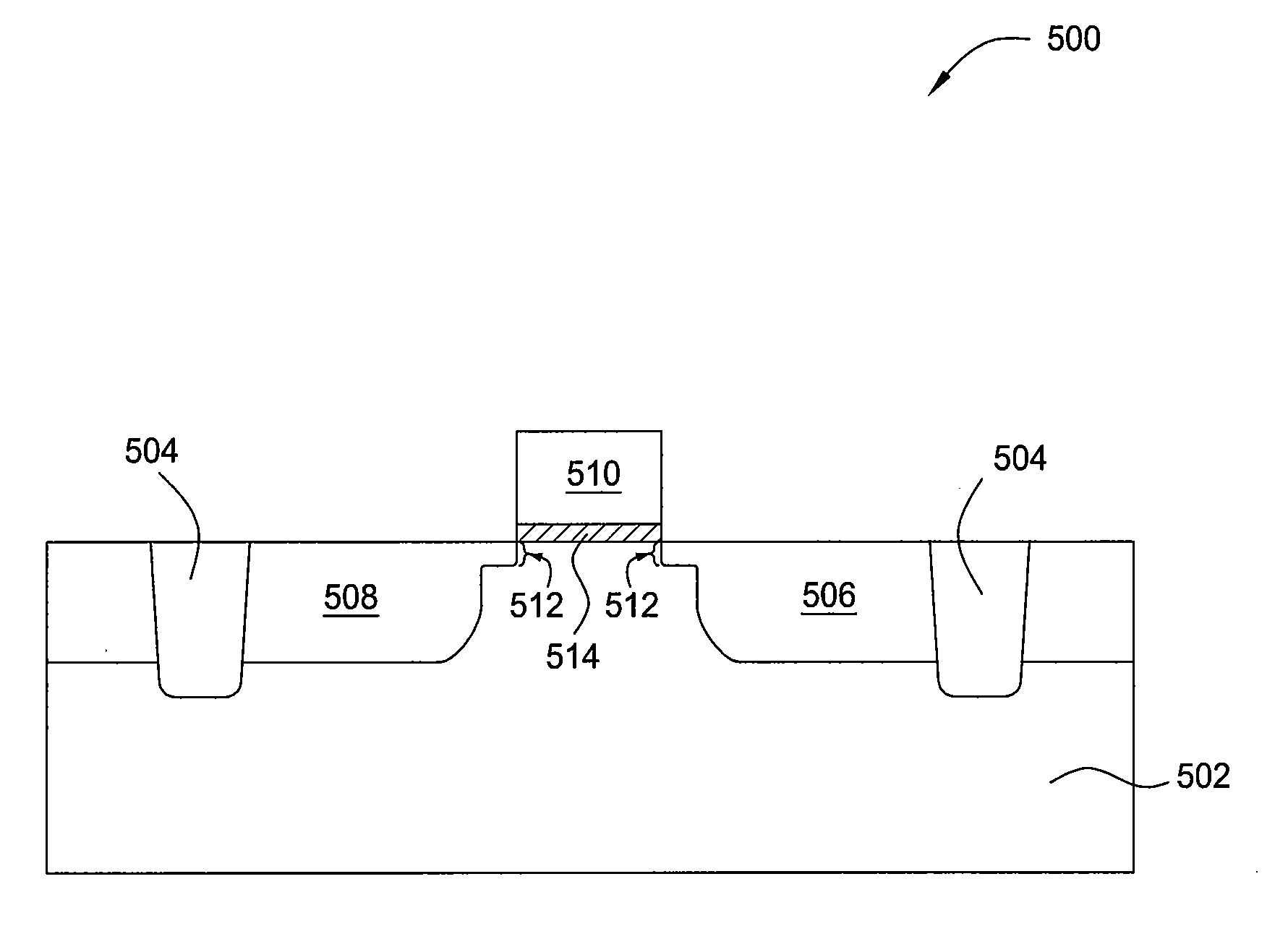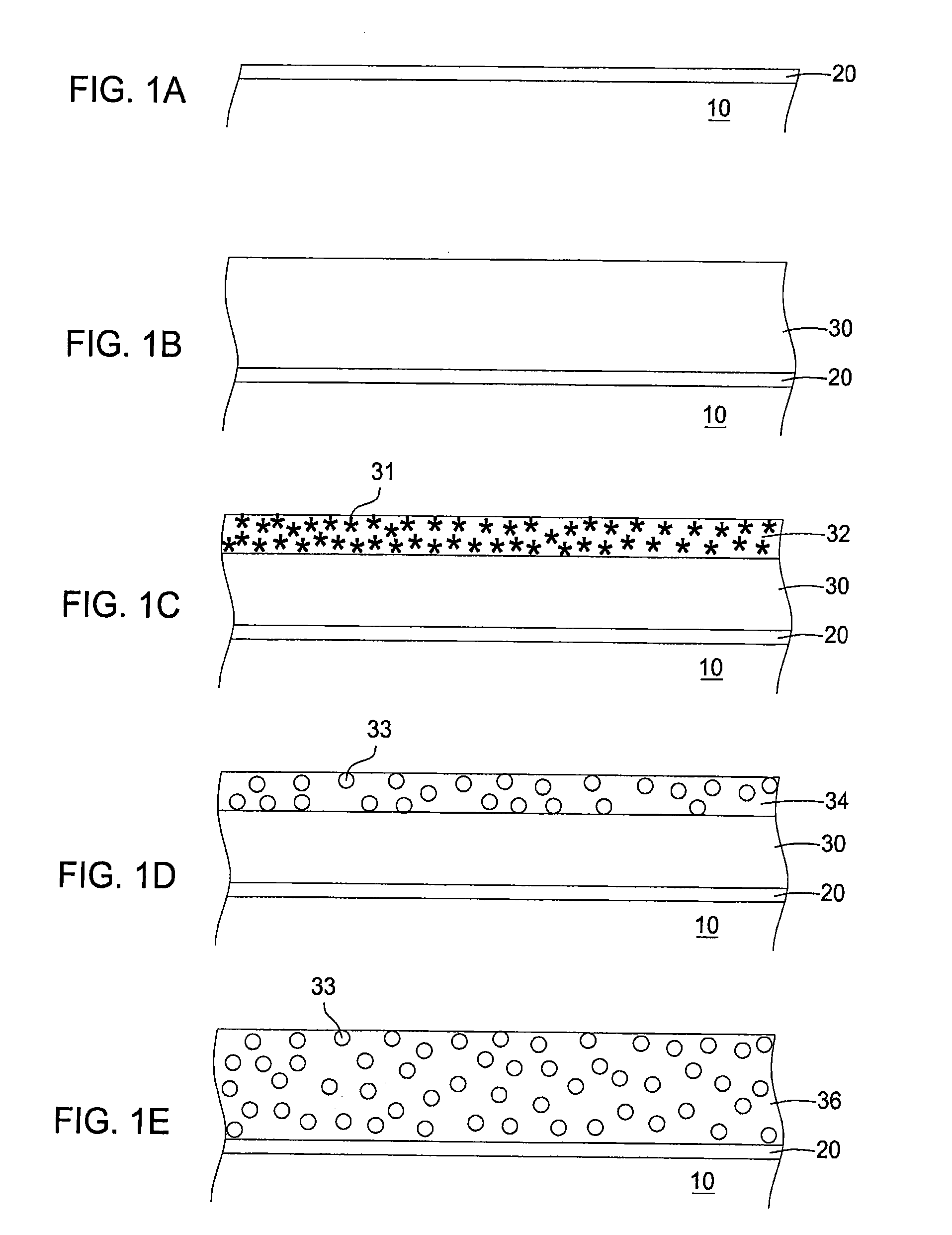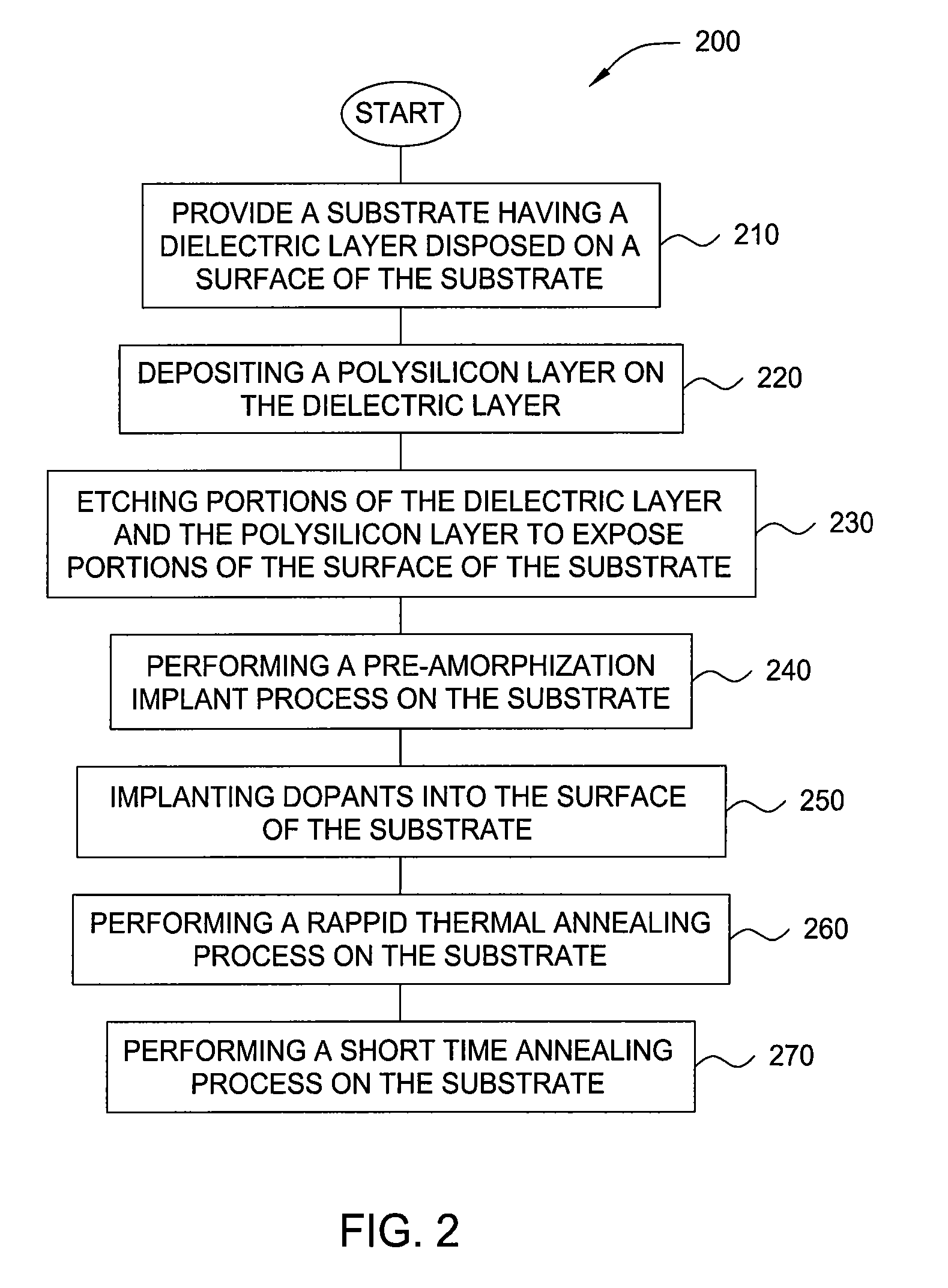Use of carbon co-implantation with millisecond anneal to produce ultra-shallow junctions
a technology of carbon co-implantation and millisecond annealing, which is applied in the direction of semiconductor devices, electrical apparatus, transistors, etc., can solve the problems of less effective conventional doping by implantation followed by thermal post-annealing, failure of devices, and difficulty in producing ultra-shallow source/drain junctions, etc., and achieves short time thermal annealing
- Summary
- Abstract
- Description
- Claims
- Application Information
AI Technical Summary
Benefits of technology
Problems solved by technology
Method used
Image
Examples
examples
[0034] The following non-limiting examples are provided to further illustrate embodiments of the invention. However, the examples are not intended to be all-inclusive and are not intended to limit the scope of the inventions described herein.
[0035] Blanket wafer and device experiments were carried out on 200 mm Si wafers. To form the ultra-shallow source / drain extension (SDE) with co-implants, a first step of Si or Ge PAI was used. This was followed by a C or F implant and finally a dopant implant. The dopant implants were B for PMOS extensions and P for NMOS extensions. On the device wafers, these extensions were implemented in a conventional transistor flow, primarily with polysilicon gates on SiON gate dielectric but with Ni Fully Silicided (FUSI) gates in some cases.
[0036] Dopant activation and damage annealing was done by a 1050° C. spike anneal unless noted otherwise, and often followed by a sub-melt laser anneal. The implants were carried out on an Applied Materials Quantum...
PUM
| Property | Measurement | Unit |
|---|---|---|
| junction depth | aaaaa | aaaaa |
| depth | aaaaa | aaaaa |
| diameter | aaaaa | aaaaa |
Abstract
Description
Claims
Application Information
 Login to View More
Login to View More - R&D
- Intellectual Property
- Life Sciences
- Materials
- Tech Scout
- Unparalleled Data Quality
- Higher Quality Content
- 60% Fewer Hallucinations
Browse by: Latest US Patents, China's latest patents, Technical Efficacy Thesaurus, Application Domain, Technology Topic, Popular Technical Reports.
© 2025 PatSnap. All rights reserved.Legal|Privacy policy|Modern Slavery Act Transparency Statement|Sitemap|About US| Contact US: help@patsnap.com



